
That's Entertainment! is a 1974 American compilation film released by Metro-Goldwyn-Mayer to celebrate the studio's 50th anniversary. The success of the retrospective prompted a 1976 sequel, the related 1985 film That's Dancing!, and a third installment in 1994.

Show Boat is a 1929 American pre-Code sound part-talkie romantic drama film based on the 1926 novel Show Boat by Edna Ferber. The film initially did not use the 1927 stage musical of the same name as a source, but scenes were later added into the film incorporating two of the songs from the musical as well as other songs. Many of these songs from the stage show were featured in a special prologue that was added to the picture before it was released. This film was produced and released by Universal. Like the majority of films during the early sound era, a silent version was made for movie theatres that had not yet converted to sound.

Abie's Irish Rose is a 1928 early sound (part-talkie) film directed by Victor Fleming and starring Charles "Buddy" Rogers, Nancy Carroll, Jean Hersholt, and J. Farrell MacDonald. In addition to sequences with audible dialogue or talking sequences, the film features a synchronized musical score and sound effects along with English intertitles. The soundtrack was recorded using the Western Electric sound-on-film system. The film based on the 1922 play Abie's Irish Rose by Anne Nichols. The film was later remade in 1946. In the 1930s, author Nichols revealed that her deal with Paramount brought her $300,000 plus half the film's profits.
Phonofilm is an optical sound-on-film system developed by inventors Lee de Forest and Theodore Case in the early 1920s.

Tamara Geva was a Soviet and later an American actress, ballet dancer, and choreographer. She was the daughter of art patron and collector Levkiy Gevergeyev and she was the first wife of the well-known ballet dancer and choreographer George Balanchine.
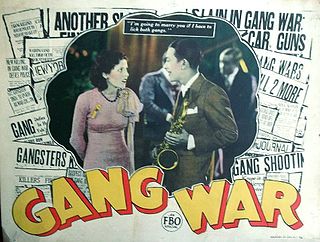
Gang War is a 1928 American sound part-talkie gangster film directed by Bert Glennon, best known for being the main feature attached to Steamboat Willie, the debut of Mickey Mouse in sound. In addition to sequences with audible dialogue or talking sequences, the film features a synchronized musical score and sound effects along with English intertitles. The soundtrack was recorded using the RCA Photophone sound-on-film system. Despite the synchronised sound as well as the all-star cast, the film is largely unknown in its own right. One reel of an original 35mm positive print of nitrate film survives at the BFI film archive. The rest of the film appears to be lost. The film has been overshadowed by its far more famous preceding short, Steamboat Willie. The film starred Jack Pickford in his last major role as "Clyde", a saxophone player whose love for a dancer named Flowers traps him in the middle of a gang war.

The Shakedown is an American sound part-talkie pre-Code 1929 action, comedy and sports drama film directed by William Wyler and starring James Murray, Barbara Kent and Jack Hanlon.
Prodigal Son, or Le Fils prodigue, Op. 46 is a ballet created for Diaghilev's Ballets Russes by George Balanchine to music by Sergei Prokofiev (1928–29). The libretto, based on the parable in the Gospel of Luke, was by Boris Kochno, who added a good deal of drama and emphasized the theme of sin and redemption ending with the Prodigal Son's return.
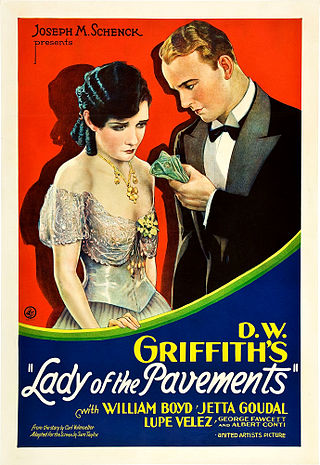
Lady of the Pavements is a 1929 American sound part-talkie romantic drama film directed by D. W. Griffith and starring Lupe Vélez, William Boyd, and Jetta Goudal. The screenplay was written by Sam Taylor, with contributions from an uncredited Gerrit Lloyd. While the film has a few talking sequences, the majority of the film features a synchronized musical score with sound effects using both the sound-on-disc and sound-on-film process.
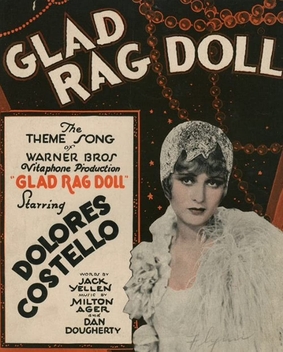
Glad Rag Doll is a 1929 American sound part-talkie pre-Code drama film directed by Michael Curtiz, and starring Dolores Costello, Ralph Graves, and Audrey Ferris. In addition to sequences with audible dialogue or talking sequences, the film features a synchronized musical score and sound effects, along with English intertitles. The soundtrack was recorded using the Vitaphone sound-on-disc system. This is one of many lost films of the 1920s, no prints or Vitaphone discs survive, but the trailer survives. The film's working title was Alimony Annie, but was changed match the title of the theme song. The theme song is entitled Glad Rag Doll both played and sung throughout the soundtrack.

Melody Lane is a 1929 black and white American musical film. It is an adaption to the play The Understander, written by Jo Swerling.

Why Be Good? is a 1929 American sound comedy film produced by First National Pictures starring Colleen Moore and Neil Hamilton. While the film has no audible dialogue, it is accompanied by a Vitaphone soundtrack that features a musical score with sound effects and some synchronized singing.
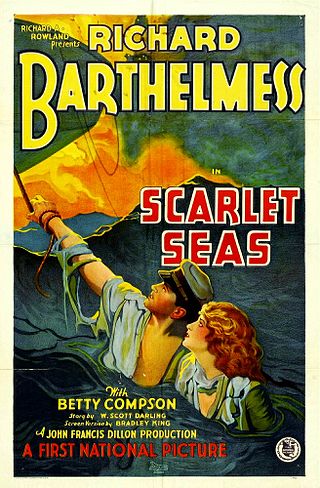
Scarlet Seas is a surviving 1929 American synchronized sound romantic adventure film produced by Richard A. Rowland and distributed by First National Pictures. Although there is no audible dialogue, the film was released with a musical score with sound effects using the Vitaphone sound-on-disc recording process. The picture was directed by John Francis Dillon. It starred Richard Barthelmess, Betty Compson, and a teen-aged Loretta Young. Originally, the film was presumed lost.
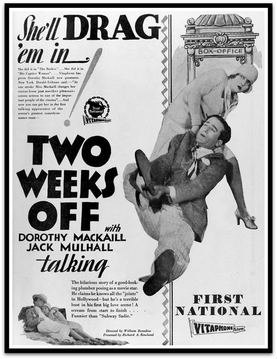
Two Weeks Off is a 1929 American sound part-talkie comedy film directed by William Beaudine. In addition to sequences with audible dialogue or talking sequences, the film features a synchronized musical score and sound effects along with English intertitles. The soundtrack was recorded using the Vitaphone sound-on-disc system. A complete nitrate print survives at UCLA.
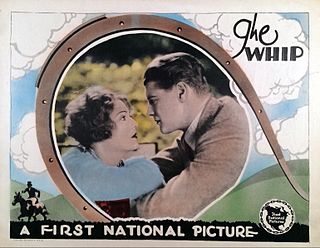
The Whip is a 1928 American synchronized sound drama film directed by Charles Brabin and starring Dorothy Mackaill. While the film has no audible dialog, it was released with a synchronized musical score with sound effects using the sound-on-disc Vitaphone process. It was based on a 1912 play The Whip by Cecil Raleigh and Henry Hamilton and distributed by First National. This sound film was released with a synchronized Vitaphone soundtrack of music and sound effects. It is set in the horse racing world of England.

Naughty Baby is a 1928 American synchronized sound comedy film directed by Mervyn LeRoy and starring Alice White and Jack Mulhall. While the film has no audible dialog, it was released with a synchronized musical score with sound effects using the sound-on-disc Vitaphone process. It was released on December 16, 1928, by First National Pictures.

Two Men and a Maid is a 1929 American sound part-talkie romantic drama film directed by George Archainbaud and starring William Collier Jr., Alma Bennett and Eddie Gribbon. In addition to sequences with audible dialogue or talking sequences, the film features a synchronized musical score and sound effects along with English intertitles. The soundtrack was recorded using the Tiffany-Tone sound-on-film system using RCA Photophone equipment.

Father and Son is a 1929 American sound part-talkie pre-Code drama film directed by Erle C. Kenton from a story by Elmer Harris. In addition to sequences with audible dialogue or talking sequences, the film features a synchronized musical score and sound effects along with English intertitles. The sound was recorded via the Western Electric sound-on-film process. The film was produced by Harry Cohn for Columbia Pictures.

Trial Marriage is a 1929 American Synchronized sound pre-Code drama film directed by Erle C. Kenton from a story by Sonya Levien. While the film has no audible dialog, it was released with a synchronized musical score with sound effects using both the sound-on-disc and sound-on-film process. Produced by Harry Cohn for Columbia Pictures Corporation, the film was released on March 10, 1929. Charles C. Coleman was assistant director. As was the case for the majority of films during the early sound era, a silent version was prepared for theatres who had not yet converted to sound.
















